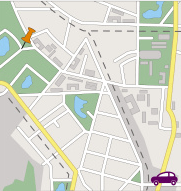Lets work together



Suite 3A, Chapel Allerton House, 114 Harrogate Road, Leeds, LS7 4NY
ukinfo@integrated-skills.com
+44 (0) 3300 888 670

In mathematical terms, the core aim of dynamic vehicle routing is to obtain the closest possible ratio (i.e. 1:1) of workload (jobs) to available vehicles. In mathematical terms, the core aim of dynamic vehicle routing is to obtain the closest possible ratio (i.e. 1:1) of workload (jobs) to available vehicles. In addition, the route optimisation component seeks to establish a linear sequence of destinations that each vehicle visits, whether the vehicle is loading or unloading. In the real world, the capacity of each vehicle is in a constant state of flux, and the variables that exist in the daily operations of a distribution company mean that complications arise which mitigate the achievement of the perfect 1:1 rate.
What are the variables?

l then goods have been delivered in the correct quantities, to the right customer, at the right time and the right location. As far as the company doing the lifting is concerned, these objectives must be hit with the lowest possible financial outlay.
Vehicle route planning is that part of distribution and logistics which deals with the planning of the delivery of goods to retail, industrial and domestic customers. If the framework has been successfu
Suppose, that a given number of customers in the region require commodity X to be supplied within this strict framework from one distribution centre or depot. The product must be delivered as required with the minimum cost and within all legal and environmental obligations. The types of problems that can ensue are:
How does route planning hit these objectives?
This will vary within the constraints presented by the circumstances of an individual journey. As stated above the overall objective is to obtain a perfect mathematical ratio but because the goals of the route optimisation software often work against each other, this is often impossible. It is a balancing act between a fluid set of variables. For example, the shortest route may not be the fastest and in turn it may not be suitable for the type of vehicle and /or load it has to carry. Furthermore, there may be issues on the infrastructure itself, such as low bridges, or the road itself may be too narrow for larger vehicles. Here, the algorithms in the delivery route planning software must calculate the best alternatives so that the operators can make an informed next best decision.
Conceptually, delivery route planning software seeks to iron out the above complications as they arise, and ideally operators should be able to predict when problems may arise.
Would you like to know more about Objectives of Route Planning and Optimisation? Fill in your details below and let us know how we can help.
Website Designed & Built by we are CODA